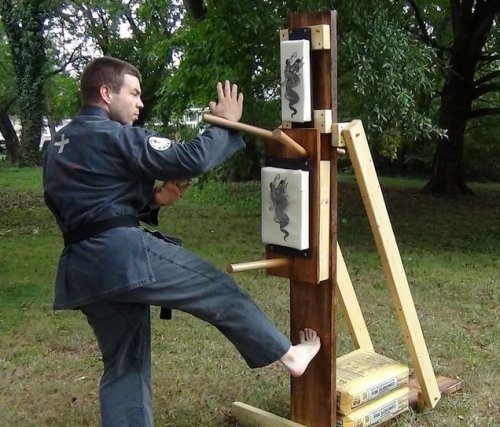
In recent years, modern bodybuilders have increasingly returned to the “golden” era of bodybuilding. They are not at all inspired by the competitors and winners of modern competitions. Men are drawn to the classic V-shaped torsos of past champions. They are not at all attracted to the exaggerated waists of modern professionals.
In the 1970s, bodybuilding enthusiasts weren't just concerned with how to best develop specific muscle groups. They also cared about their overall physique. All of this combined became the goal of a successful bodybuilder. Bodybuilding at that time represented both a healthy and competitive culture, creating harmony and balance in the body's musculature as a whole.
Stars like Lee Haney, Frank Zane, and Arnold Schwarzenegger weren't born this perfect. They purposefully worked their waist muscles just as hard as they worked their chests or biceps.
What is the meaning of vacuum?
In order for the vacuum to make your waist ideal from a bodybuilding perspective, you need to start by pumping up your brain—in other words, understanding the anatomical structure of this part of the body.
When the famous Frank Zane got into the famous vacuum pose, he actively tensed the muscle that modern bodybuilders have completely forgotten about – the TVA (musculus transversus abdominis) or the more familiar transverse abdominal muscle.
This muscle is the deepest, located beneath the obliques and rectus abdominis. This muscle is unique in that it has no skeletal attachments and does not pull on bones when contracting, as other muscles do. The TVA runs across the entire torso (hence its name), like a weightlifter's belt. And speaking of belts, the TVA essentially acts as a natural belt when lifting weights. When this muscle contracts, it stabilizes the spine by increasing intra-abdominal pressure.
But this muscle isn't just essential for achieving bodybuilding victories. Its purpose is to hold all of the body's internal organs in place, like a corset. Simply put, this muscle isn't a bulging muscle, which is why it needs to be trained regularly.
Ideal waist vs. no pain
A slim waist isn't the only reason to train the transverse abdominis muscle. Scientists have conducted a number of studies, and their results indicate that in people with low back pain, the TVA is simply dormant. In other words, it doesn't contract when needed.
However, other studies have yielded more positive news. It turns out that with the right exercises, the transverse abdominis muscle can be activated. Lower back pain can even disappear completely, or at least subside.
Transverse Abdominal Workouts
You can always start training TVA at home or at the gym. It all starts with the basics—pulling in your abs while lying on your back. At this point, there's no need to control your core position, and gravity will also be your ally in the fight for a trim waist.
How to do a vacuum while lying down
Lie on your back on a flat surface (ideally on the floor), press your feet to the floor, and bend your legs.
It's important to exhale as deeply as possible. During this process, your stomach will draw in, your diaphragm will rise toward your head, and your TVA will contract.
Mentally pull your navel towards your spine – just picture it in your head.
At the beginning of your training, you should hold this position for about 15 seconds, but aim for 60 seconds.
Start with three fifteen-second sets, gradually increasing to five 60-second sets. Practice the vacuum immediately after waking up, before eating or drinking.
By the way, you don't have to hold your breath while doing the “vacuum” exercise. You can take short breaths in and out, as long as you keep your stomach pulled in.
How to do a vacuum on all fours
Once you've mastered the “lying vacuum,” you can move on to the next stage—the exercise on all fours. In this case, gravity will be your enemy.
You need to get on all fours, keep your neck in a neutral position, your pelvis should be above your knees, and your shoulders should be positioned directly under your wrists and elbows.
Start breathing the same way as when lying down – remember, pull your navel towards your spine.
Since you already know how to pull in your stomach correctly, start with 3 sets of 30 seconds each, and work your way up to 5 sets of 60 seconds each.
How to do a vacuum while sitting
In this version of the vacuum exercise, the spinal stabilizers are involved.
Sit on a chair or bench, but do not lean back.
Pull your stomach in as you exhale; you can start with more comfortable sets of time.
Gradually work your way up to 60-second sets.
Once you've mastered the vacuum while sitting on a hard, stationary surface, you can make the exercise more challenging. For example, try sitting on a feather bed or a fitness ball. Coordination will be more challenging, but that's the whole point.
How to make a functional vacuum
While still performing the exercise while seated, begin practicing the functional vacuum throughout the day. It's simple: pull your stomach in wherever it feels appropriate. For example, while waiting in line at the store, sitting at your desk in the office, or talking on the phone with friends.
Here, you'll need to maintain tension in the TVA for as long as possible, but don't forget to breathe. Very soon, you'll achieve complete automatism, and you won't even have to remember to exercise the transverse abdominis.
TVA and Rectus Abdominis Training
To make vacuum training more functional and intense, you should add exercises that combine the transverse and rectus abdominis muscles.
You need to initially pull in your stomach, at this moment the TVA will tense, and then make some movement, for example, a twist – the work of the rectus muscle will start.
You can perform vacuum crunches at home if you like. Remember to first draw your stomach in and then exhale as you contract your rectus abdominis.
How to make a vacuum for speakers
If your goal is to compete in bodybuilding competitions, it's important to practice vacuum posing. Remember, the judges evaluate competitors from the moment they appear on stage, not when you're twirling and showing off your muscles.
It's important to master every detail—from your entrance on stage, how you'll do it, how you walk, how you pose, and what your facial expressions will be during these moments. To achieve a perfect waist, you need to tirelessly practice the vacuum. Your transverse abdominis muscle must be constantly toned.
Remember that vacuuming doesn't just create a perfect waistline. It improves internal organ function, blood circulation, and massages the internal organs.






